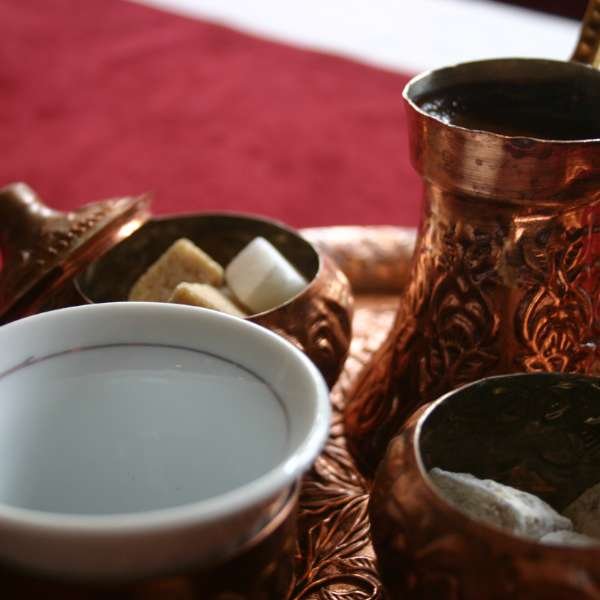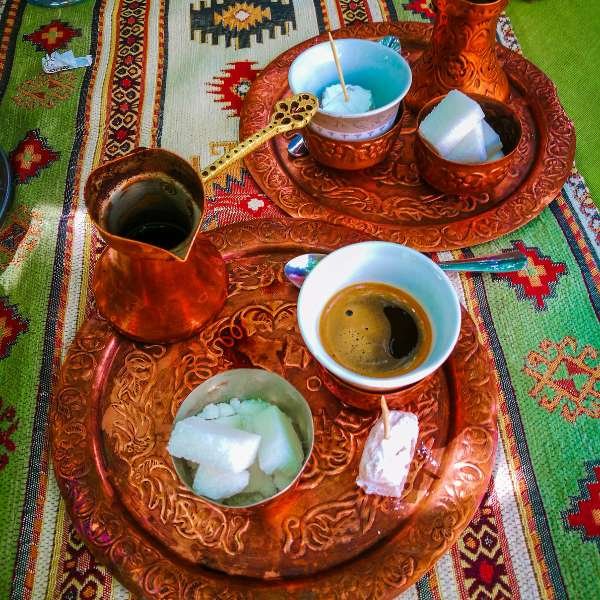You are seeking to explore a coffee revel in like no different, gaining knowledge of the way to make Bosnian coffee is an invite to dive right into a centuries-old tradition. More than only a beverage, Bosnian espresso is a cultural ritual, an image of hospitality, and a unique brewing technique that yields a rich, fragrant drink. Known for its thick texture and full-bodied taste, Bosnian java is an artwork that calls for precision, endurance, and expertise of the procedure. Whether you’re a coffee fanatic or a newcomer eager to discover international espresso cultures, learning the art of Traditional Bosnian brew brewing opens the door to a brand new global of wealthy flavors and cultural appreciation.
Why Bosnian Coffee is More Than Just a Drink

Learning how to make Turkish coffee without an ibrik can be a sport-changer in case you don’t have the conventional pot reachable. Simply use a small pot or saucepan, including finely floor Turkish espresso and water, and sweeten to flavor. Heat the combination over low heat, permitting it to froth. Once the espresso begins to froth, cast off it from warmth, then go back it to the range till the foam rises again. Repeat till it reaches your preferred power.
However, with regards to espresso tradition, Bosnian coffee is more than just a drink. It’s a rich cultural culture that includes staying energy, ritual, and social connection. Served in small cups, frequently with a aspect of Turkish delight, Bosnian coffee represents hospitality, network, and the artwork of slowing down. This ritualistic technique to espresso eating makes it a completely particular and tremendous revel in past mere refreshment.
A Brief History of Bosnian Java

The story of Bosnian espresso intertwines with the arrival of the Ottoman Empire in the 15th century. The Ottomans, bringing with them the cezve (or džezva in Bosnian), introduced a new way of brewing that was destined to become central to the region’s coffee culture. Over time, this brewing method evolved into a distinct practice, carving out its own identity in Bosnia. Bosnian espresso, while bearing similarities to Turkish Brew, grew into something uniquely its own, marked by a slow-brew process and a thick, velvety texture that differentiates it from other java traditions. The rich, robust flavor it delivers is not just a product of the beans but of the care and attention invested in its preparation.
The Cultural Importance of Bosnian Coffee in Daily Life

Coffee in Bosnia and Herzegovina is not merely a morning habit; it is woven into the social and cultural fabric of life. The ritual of brewing, sharing, and savoring Traditional Bosnian brew is necessary to regular interactions. It is a image of appreciation and reverence—offering a cup to a guest is one of the maximum honors. In Bosnian houses, in nearby espresso homes known as “kahvehanes,” the brewing of coffee turns into a sluggish, deliberate ritual that encourages deep communication and reflection. It’s a drink that’s meant to be savored, a cup that invites you to take your time, engage in conversation, and enjoy the instant.
What You Need to Make Bosnian Java

To make Bosnian espresso, you don’t need intricate equipment—simply the proper device and elements to capture the essence of this centuries-vintage subculture. The procedure is simple however calls for interest to element. With only a few basic gadgets, you can begin your adventure into the world of Balkan espresso.
Essential Equipment for Brewing Bosnian Java

The most crucial tool in the process is the džezva, the traditional Bosnian espresso pot. This small, long-handled pot is the key to achieving that perfectly brewed coffee, allowing for careful control of the temperature. Alongside the džezva, you’ll need small, espresso-sized cups to sip the java slowly and fully appreciate its richness. A heat source, such as a stovetop or open flame, is also essential to ensure the coffee is brewed slowly and evenly.
Choosing the Right Bosnian Java Pot (Džezva)
The džezva is not just a piece of equipment; it’s a symbol of tradition. Typically made of copper or brass, the džezva is designed to heat the coffee gradually, ensuring the brew reaches its full potential. The shape is distinct, with a narrow neck and wide base, which allows for even heating. If you’re a beginner, it’s advisable to start with a smaller džezva, which makes it easier to perfect your technique before moving on to larger ones.
Selecting the Perfect Bosnian Java Beans
The quality of your beans will directly impact the taste of your Traditional Bosnian brew. For authenticity, opt for dark-roasted, finely ground beans. The finer the grind, the better the extraction of flavors during the brewing process. Typically, Bosnian espresso is made using beans imported from regions known for their bold, full-bodied flavor profiles, such as South America. The freshness of the beans is equally important; freshly ground coffee will always produce a more aromatic, flavorful brew.
The Role of Freshness in Brewing Bosnian java
Freshness is the cornerstone of a great Balkan brew. Grind your beans just before brewing to preserve the coffee’s essential oils and aromatic compounds. The java grounds should be as fine as possible, almost like powder, to ensure a rich, smooth extraction. Freshly ground coffee doesn’t just taste better—it also creates the thick, luscious foam that makes Bosnian espresso so special.
Step-by-Step Guide on How to Make Bosnian java

Now that you have your equipment and ingredients ready, let’s dive into the art of brewing the perfect Bosnian Java.
Preparing Your Džezva for Brewing
Start by filling your džezva with cold, fresh water. Measure out roughly 50-70 milliliters of water for each cup of coffee you plan to brew. Precision is key: getting the water-to-coffee ratio right will determine the strength and texture of your brew. This attention to detail is the first step toward a perfect cup.
Measuring the Coffee Grounds: The Perfect Ratio
For each cup of water, add about one heaping teaspoon of finely ground coffee. This is the standard ratio for most Bosnian brews, but you can adjust it according to your taste. Want a stronger brew? Add a little extra. The right ratio will yield a brew that’s neither too weak nor too overpowering, with a thick, flavorful consistency that’s the hallmark of Balkan espresso.
The Importance of Cold Water
Using bloodless water is important when brewing Balkan espresso.It facilitates a slow, controlled extraction of flavors, ensuring a smooth, rich cup. The gradual warming of both the water and coffee grounds together allows the flavors to meld harmoniously. Resist the urge to use hot water, as it can lead to over-extraction, turning the brew bitter and stripping it of its distinctive essence.
How to Achieve the Ideal Coffee Grind
The grind is key to Balkan coffee’s signature texture. It should be extremely fine—almost as powdery as flour. A coarse grind won’t extract properly, and the result will be a weak, unsatisfying brew. The fine grind ensures the espresso dissolves smoothly into the water, contributing to the velvety richness of the coffee’s flavor.
Bringing Your Coffee to a Boil
Once you’ve combined the water and brew grounds in your džezva, place it over a stovetop or open flame. Heat the mixture slowly, never rushing the process. The coffee should gradually warm up, allowing the flavors to meld. As the coffee heats, foam will begin to form. This is the crucial stage where patience pays off. Watch closely—when the foam starts to rise, you’ll need to act quickly.
Watch for the Foam: Mastering the Brewing Process
The foam, or “krema,” is a key feature of the Balkan brew. As the coffee begins to boil, the foam will rise to the surface. At this point, carefully remove the džezva from the heat to prevent the foam from spilling over. This process, called “skimming,” should be repeated two or three times. Each time, remove the džezva from the heat, skim off the foam, and return it to the heat to continue brewing.
The Art of Pouring Bosnian Coffee into Cups
When your coffee is brewed to perfection, it’s time to pour. Slowly and carefully, pour the espresso into your cups, ensuring that each cup gets a generous amount of foam. The foam is the soul of Balkan Espresso—its silky texture and rich flavor make it the crown of the brew.
Tips and Tricks for the Best Balkan Espresso

Brewing Bosnian espresso is an art that benefits from a few key tips and tricks. With a little practice and attention to detail, you can elevate your espresso-making skills.
How to Get the Perfect Foam Every Time
To achieve the perfect foam, never let the coffee come to a full boil. Heat it gently, and remove it from the flame as soon as the foam reaches the top. Repeatedly skimming the foam ensures a thick, creamy layer on top of each cup.
Why Stirring is Forbidden in Bosnian Coffee
Stirring Balkan espresso is a big no-no. The coffee should not be stirred during the brewing process as it disrupts the formation of the foam and can lead to bitterness. Allow the coffee to develop its own natural character without interference.
How to Adjust the Coffee Strength to Your Liking
You like your coffee stronger, increase the amount of grounds. For a milder brew, use less espresso. This simple adjustment will allow you to personalize your Java experience to suit your tastes.
Common Mistakes to Avoid When Making Bosnian java

One common mistake is using water that’s too hot, which can result in an over-extracted, bitter brew. Another mistake is rushing the brewing process. Balkan espresso requires patience—rushing it will sacrifice flavor.
Serving Balkan Espresso Like a Local
In Bosnian brew isn’t just a drink—it’s a moment to savor. To serve Balkan espresso like a local, remember to present it with a glass of water. The water cleanses the palate and prepares you for the rich, intense flavors of the coffee.
Balkan Espresso Drinking Etiquette
You drink Bosnian espresso, taking small, thoughtful sips. The purpose is not to rush but to savor the rich, complex flavors. Engage in conversation and enjoy the slow rhythm of drinking coffee the Balkan way.
How to Pair Bosnian Coffee with Traditional Sweets
Bosnian espresso is best enjoyed with traditional sweets like baklava or rahat lokum. These treats complement the coffee’s rich bitterness, creating a delightful balance of flavors.
The Best Time of Day to Enjoy Balkan Espresso
Though typically consumed in the morning, Balkan Java can be enjoyed at any time of the day. Its rich, velvety taste makes it a perfect companion for quiet afternoons or lively evening conversations with friends.
Frequently Asked Questions About Bosnian Java
How Long Does it Take to Make Balkan Espresso?
Brewing Bosnian espresso takes about 10-15 minutes. This slow, deliberate process ensures a rich, full-bodied flavor that’s worth the wait.
Can You Make Bosnian Java Without a Džezva?
While the džezva is the traditional tool, you can use a small pot or saucepan as a substitute. However, the džezva’s unique design is optimized for the best flavor extraction.
What Makes Bosnian Coffee Different from Turkish Coffee?
While similar in many ways, Balkan espresso differs in the prominence of its foam and the gradual, patient brewing process. The result is a thicker, more velvety cup of coffee.
Conclusion
Making Bosnian coffee is not simply about brewing a cup—it’s about participating in a time-honored tradition, a social event that encourages reflection, connection, and joy. With every cup, you share in the rich cultural heritage of Bosnia and Herzegovina. It’s more than just espresso—it’s an experience, a celebration of patience, precision, and community.

